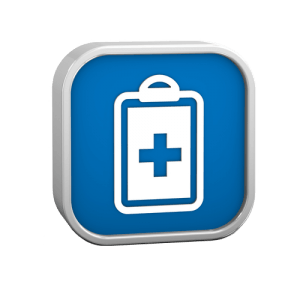
Limited Ability to Improve Patient Care With Apps
Although mobile apps are the future of patient-centered healthcare and there are currently over 40,000 healthcare apps available for download in the U.S. iTunes app store, mobile apps have yet to move from novelty status into mainstream use. The reason for this may be that healthcare apps are not yet seen as valid ways to improve patient care by the professional medical community.
As the first step in an effort aimed to improve patient care through the integration of mobile applications into mainstream use, a new study published by the IMS Institute for Healthcare Informatics in late 2013 categorized and analyzed the value of all healthcare apps currently available in iTunes.
Of the 40,000+ healthcare apps studied, less than 1/3 were created for use by healthcare professionals, with the majority created for patient use. Most apps focused on exercise and weight loss and the functionality of nearly 11,000 healthcare mobile apps was limited to little more than providing information. Subsidiary app functions include the ability to instruct, record, display, guide, remind/alert, and communicate, though these were nowhere near as common as the ability to provide information.
There are some healthcare mobile apps that were reported to have extraordinary functionality, but were not included in the analysis because they are not yet available for public download due to pending FDA approval. Another example of a high-functioning healthcare app not available to the public is the BlueStar app from WellDoc, which requires a prescription.
40,000 apps is a lot to choose from, and the study shows that patients do not tend to experiment or test several possibilities to help them with their wellness process. More than 50% of healthcare apps are downloaded less than 500 times each, and 15% of all healthcare app downloads are attributed to just 5 apps. Researchers believe that part of this disproportionate distribution of downloads is the lack of guidance patients receive from healthcare professionals.
Doctors report seeing the potential benefits of mobile apps for patient care, but most are not yet comfortable making formal recommendations about what apps are helpful to patients. Physician confidence levels in app recommendation will increase once evidence can be shown that there is a quantifiable benefit to patients, best practices and use guidelines are developed, and everyone can be assured that all medical information is secure to be stored in and transmitted through the app.
Another reason healthcare apps are limited in their ability to improve patient care is that many health concerns are found in the demographic of patients age 65 and older, this population also being the least likely to download and use mobile apps.
After patients and providers recognize the value of healthcare apps, the next steps to integrate apps into mainstream care, creating security and privacy guidelines and regulations, developing an evaluation system, and finally full integration of apps into patient care.